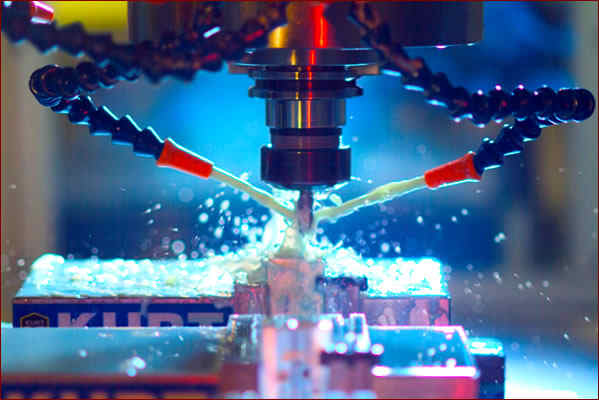Address
304 North Cardinal St.
Dorchester Center, MA 02124
Work Hours
Monday to Friday: 7AM - 7PM
Weekend: 10AM - 5PM

Milling is the use of several single-point cutting tools grouped around the periphery or face of the cutter or hob. The principles of single-point tool cutting apply to milling. In milling, the tool rotates and the movement of the table, the spindle, or the arbor feeds the work into it.
The face of the cutter is usually straight and at right angles to the axis of rotation. The periphery is usually straight and parallel to the axis of rotation. The cutting edges are ground so as to maintain the correct cutting angles and chip space. The outside diameter and height of teeth decrease with grinding. The cutters may be solid or they can be made with inserted blades; both may be tipped with cast alloys or cemented carbides. If inserted blades are used, the size of matched or gang cutters can be maintained more economically.
Odd shapes or contours are incorporated in milling cutters known as form cutters and hobs. The back-off angle is continued in such a way that the contour is maintained by grinding only the face of the cutter. As the cutter is ground, its diameter is reduced. Cast alloys and cemented carbide tips also can be used in this type of cutter.
Economies in manufacture can be made by milling more than one surface at a time, or by cutting the separate surfaces without removing the part from the machine. More than one surface may be cut by group-milling cutters on an arbor. Different diameters in various in mill surfaces parallel or vertical to the axis of the milling . When slots or broad, flat surfaces are milled, interlocking blade cutters can be used to assure a continuously milled surface or the correct width of a slot The interlocked cutters are spaced apart by washer spacers at the hub of the cutter to compensate for the grinding of the cutter.
Parts are often designed with milled surfaces at an angle to other milled surfaces, or on a plane higher or lower than another. These surfaces can often be located in the same plane by altering the design of the part attached to the milled surface. In this way they can be milled in one operation .
VIBRATION AND CHATTER
With the use of cast alloy and cemented-carbide cutters, speeds and feeds have been increased so much that only the modern machines have the power, strength, and rigidity to use these cutters effectively. Chips are red-hot when parts are milled at these high rates; therefore, the engineer must again make certain that his part is rigid enough to withstand the cutting pressures, and that the part can be held firmly in the fixture or on the table. Vibration in spindle, arbor, table, fixture, or part is injurious to the tool and gives a poor surface finish. The high speeds used in cutting cast iron, brass, aluminum, and magnesium also require strong fixtures and machines to prevent vibration. Spindle speeds and feeds are so high that machines are now designed especially for the aviation industry to efficiently machine the light alloys.
contributed by John,a China plastic stool mould making manufacturer